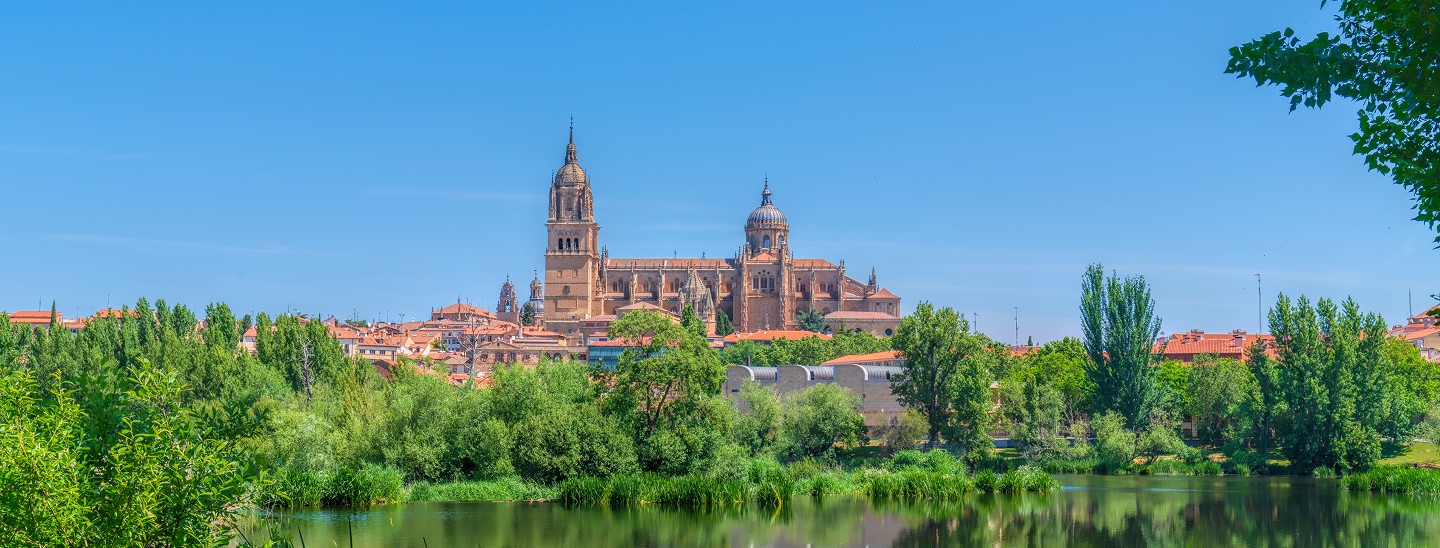
How to Get There
If you come from abroad the easiest way is to take a plane to Madrid (Barajas Airport), and then take a bus (MonBus) or train (RENFE), both depart frequently. From Madrid to Salamanca the trip takes about two hours. If you come from Portugal or France you can do it by bus or train.
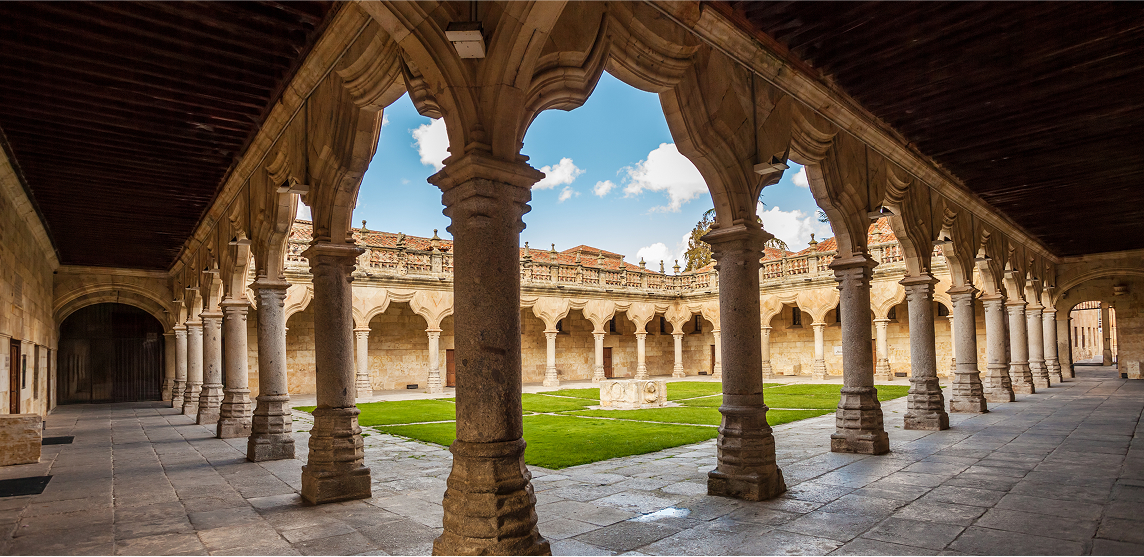
By car
By car the A-62 and A-66 motorways will take you to the city. To get from Madrid it is necessary to follow the A-50 motorway. Bus. If you opt for the bus, there is a Monbus bus line that goes directly from Madrid-Barajas airport to Salamanca. The stop in Barajas is located in Terminal 1 of the airport, in the parking lot located in front of the arrivals hall, there is also one in the T4. The sale of tickets for this service and the consultation of schedules can be done from its Web https://www.monbus.es/en at the usual ticket offices and within the airport itself, in the travel agency of El Corte Inglés, located on the first floor of the T1. You can also call: +34 91 272 28 32. From Madrid-Barajas airport, to get to the Autobuses Sur station in Madrid (C/ Méndez Álvaro) the best option is to take the metro line No 8 to Nuevos Ministerios station and then the No 6 to Méndez Álvaro. You can also take a taxi if you don't want to make line changes. The telephone number for tourist information in Madrid is +34 91 578 78 10.
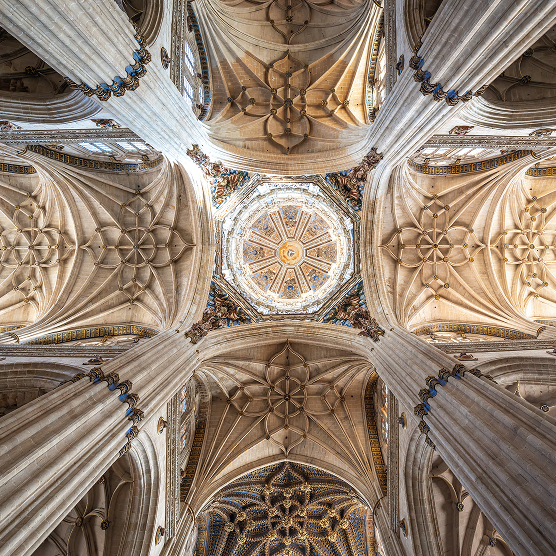
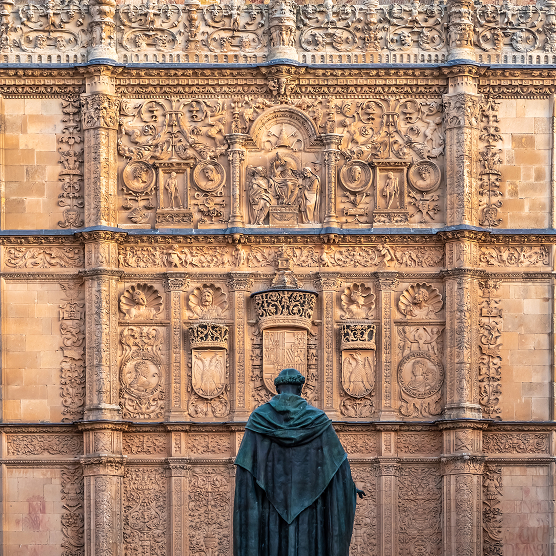
By bus
Salamanca Bus Station: Avenida Filiberto Villalobos 71, 37007 Salamanca + 34 923 23 67 17
IN TRAIN
The metro website is https://www.metromadrid.es/
Salamanca train station. Avda de la Estación s/n /37004 Salamanca
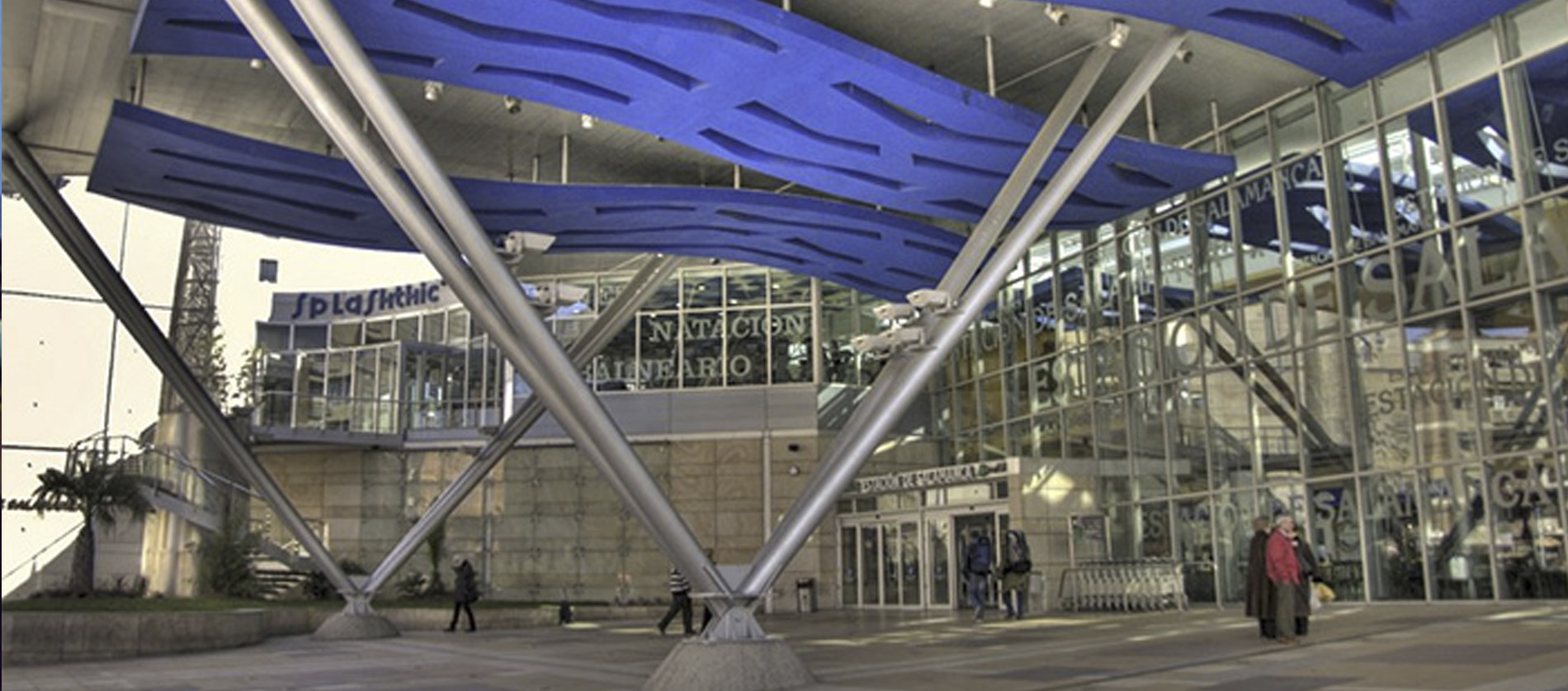
By plane
Matacán Airport (Salamanca) +34 923 329606.
Barajas Airport (Madrid) +34 902 35 35 70 +34 91 305 83 43 +34 91 305 83 45
Villanubla Airport (Valladolid) +34 983 41 55 00
www.aena.es
About the City
The history of Salamanca had its origin in a village settled on the hill of San Vicente on the Tormes River. This happened about 2,700 years ago, during the First Iron Age, and since then the place witnessed the passage of vacceos, vettones, Romans, Visigoths and Muslims. The medieval repopulation was carried out by Raymond of Burgundy, son-in-law of King Alfonso VI, who laid the foundations of a city that after eight centuries accumulating art and wisdom has become, thanks above all to its university character, one of the capitals with the greatest cultural tradition and monumental splendor of the entire European continent.
MODEST ORIGINS
In the first Iron Age a small group of farmers established in a dozen houses protected by a simple wall, controlled the ford of the Tormes River.Four hundred years later, they extended to cover within their limits the rocky platform known as Teso de las Catedrales.
From the middle of the 4th century BC we can already talk about the ancient Celtiberian city of Salmantica. Protected by a stone wall, some fragments are still preserved in several streets of the old town, the castro had a marked urban structure and was within the area of influence of two unique pre-Roman villages: vacceos and vettones. Precisely to the latter must be attributed the authorship of the Bull of the Bridge, zoomorphic sculpture that has ended up becoming one of the best known in Salamanca.
ROMAN CITY
In 220 BC, the almost five thousand inhabitants of the pre-Roman Salmantica attended the assault led by the Carthaginian general Aníbal Barca, accompanied by an exotic squadron of forty elephants. This event, which meant for the city its entry into history, was the announcement of a not-too-distant Roman conquest.
From the middle of the 1st century BC, the Romans converted Salmantica into a populated civitas and a strategic enclave within the layout of the Via de la Plata.
To facilitate the passage of this road (which connected Merida and Astorga), Roman engineers built a long bridge, which still today still saves the waters of the Tormes. The city, which belonged to the Lusitania, reached the category of municipality.

From the fifth century, the crisis of Rome and the successive invasions of the Germanic peoples meant for Salamanca the beginning of more than seven hundred years of decadence. Although some documentary sources mentioned the existence of several Visigothic bishops in the Salamantina see, the archaeological testimonies speak of an almost absolute decline of the old urban nucleus and of a scarce refugee population in some suburb located near the river. With the arrival of the Muslims the crisis worsened as the city remained in a no man's land, subjected to continuous incursions by both contenders. While the Christians of the north failed in their attempts to repopulate (among them those of the Asturian Alfonso I and the Leonese Ramiro II), the Islamists of the south were limited to a few incursions led by the Cordovan leader Almanzor.
RENACER MEDIEVAL
At the end of the eleventh century, the French Count Raymond of Burgundy, repopulated Salamanca with a large group of people, among which Francos and Galicians predominated.
One of the first measures was to restore the episcopal see, in 1102, in the person of the Cluniac monk Jerome Visque. While the different groups of settlers were distributed around forty collations, with their corresponding churches, the Romanesque cathedral began to be erected and the ancient Celtiberian and Roman walls were rebuilt.
The 13th century brought many novelties, some fundamental, for the historical evolution of Salamanca. In addition to the charters granted by King Alfonso IX of León, which attracted new immigrants - including a large Jewish community - the city saw its walled perimeter expanded and, above all, attended, in 1218, the foundation of the General Studies, embryo of its future University.
SPLENDOR RENACENTA
After the crisis of the fourteenth century, shared by much of the European continent, and a conflictive fifteenth century, marked by the feudal clashes of the Bandos War, Salamanca entered 1⁄2 in the sixteenth century determined to become the most important Renaissance city in the entire Iberian Peninsula. The social and economic prosperity, based on trade, latifundista incomes and the woolly activity promoted by the Mesta, increased the population to twenty-five thousand inhabitants.
The University also reached one of its times of greatest splendor, crystallizing into a powerful and decisive center of cultural irradiation, which in turn attracted thousands of students from all backgrounds and numerous religious orders seeking the intellectual and humanistic protection of the prestigious educational institution. Salamanca witnessed a real constructive fever, including the works of the New Cathedral, which completely transformed its urban physiognomy. A large number of palaces, mansions, convents, colleges and university schools were erected in which a characteristic and indigenous architectural style predominated: the Plateresque.
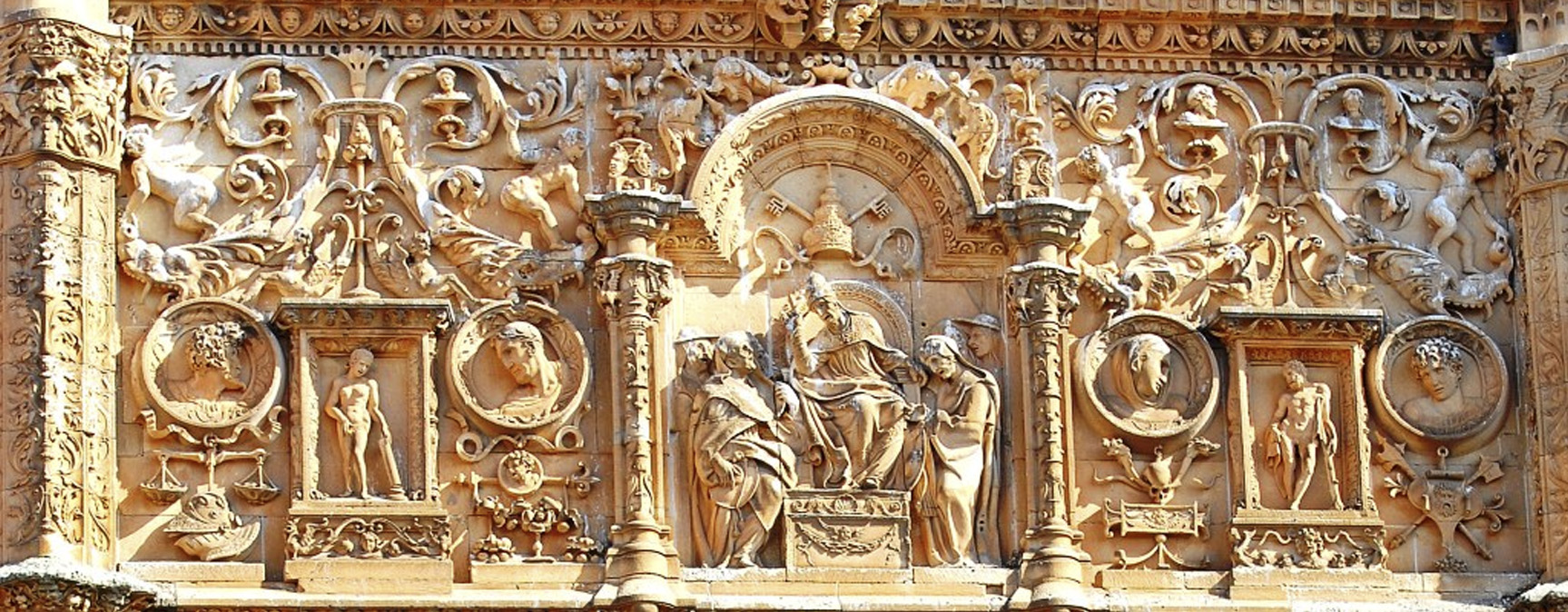
THE PEOPLE OF SALAMANCA
In one corner we came across D. Miguel de Unamuno. Under a magnolio Celestina argues with Calixto. On a terrace Torrente Ballester takes notes. And we can also meet the Lazarillo, Hannibal, María la Brava or even Vicente Del Bosque when he was a boy.
Above, the Sky of Salamanca: the natural and the one who is in the University; astronomical and mythological share prominence.
Under the feet, the great alchemical cuisine, that of flavors and knowledges, with the Marquis de Villena in front.
And besides the students, the inhabitants and the visitors, we all live there as a family with their affections and disputes; The people of Salamanca.
THE CAPACITY OF OTHERING THE FUTURE
Perhaps for this reason, Salamanca "Alto Soto de torres" that Unamuno said, survived the Lisbon earthquake, has two universities, was alive in America and solved crises and wars.
And for this reason, climbing the towers of Salamanca is a unique experience, it is to breathe, to see the world to anticipate in a pleasant way our future.
THE TREASURE
It is a treasure that is not hidden, that you do not have to look for in caves or basements, but floods it, permeates everything.
Each of its inhabitants sponsors it since it comes to the world and even beyond its march; that one word, this one an adjective or an interjection.
If you are thinking of coming to study Spanish in Salamanca, encourage yourself.
Every year, thousands of students from all over the world, more than 25,000, choose the city of Salamanca, in Spain, to learn, perfect and practice the Spanish language, making it one of the national references of language tourism.
It is a lively, welcoming, safe and well-kept city, characteristics that together with the prestige and tradition of its University, one of the oldest in Europe, and its excellent and well-accredited teaching centers, make Salamanca an ideal place for learning and perfecting the language; In short, they make it the City of Spanish.
Here we will welcome you with open arms. In the portalwww.espanolensalamanca.com you will find all the information you need about the city, the study centers and the recommendations of other students.
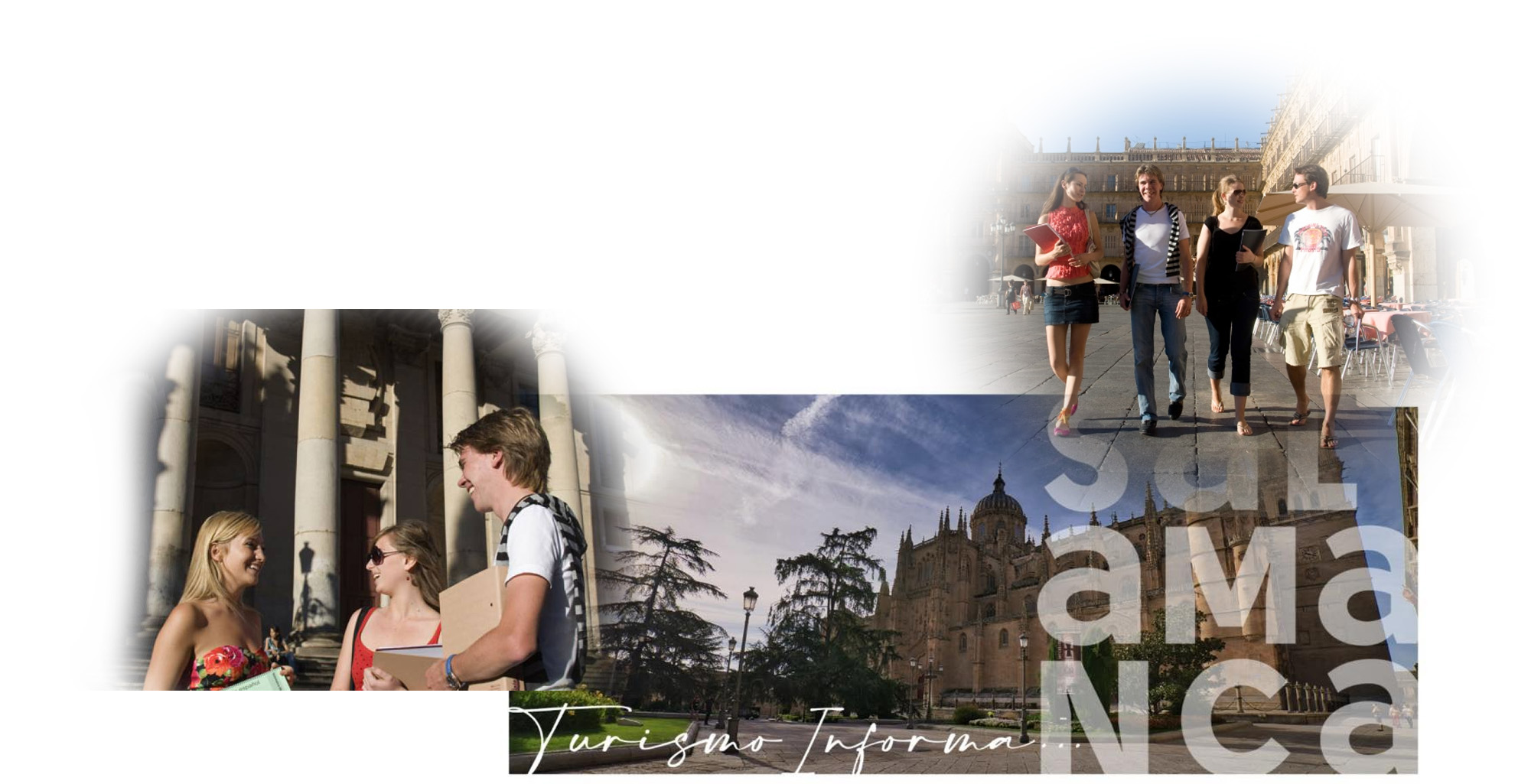
To discover
The walk through the historic center of Salamanca could be completed with a visit to the different neighborhoods that surround it, which also enjoy a great attraction.
Western Quarter: A place of activity, art and participation. It has an urban art route: The Urban Gallery, which has turned the Barrio del Oeste into a gallery open 24 hours a day, every day of the year. This neighborhood has 504 garage doors, which since spring 2013 have been artistically intervened more than 100, allowing the work of young artists to be shown and demonstrated. Do not forget to take a walk through the Urban Gallery of the Barrio del Oeste! The neighborhood also has several rationalist buildings, shops and very alternative bars and above all a lot of activity in its streets.
Urban Gallery
Urban Art in the Barrio del Oeste has created another reality, another neighborhood, more artistic, more cultural, art at the foot of the street, at the foot of life; where the canvases are doors of garages, trapas of shops, walls, walls medianeras, urban furniture. Creating an Urban Gallery open 24 hours a day every day of the year!

Around the urban road of the Gran Vía we find another interesting route with a stop at the Convent of the Claras, the church of Sancti Spirits or the Filmoteca de Castilla y León.
Neighborhood of San Vicente: In it the first settlers of the city settled and today you can visit the archaeological site that preserves important remains of the Iron Age. Its elevated location allows to obtain fabulous views of the towers of the city. Its buildings and streets witnessed battles during the War of Independence.
The Tormes River, orchards and gardens. Salamanca is greener than it seems, it has parks, gardens and orchards inside convents, churches and palaces. Nature spaces that can be discovered through different guided tours with which to observe the flora and fauna and achieve the integration of the river in the life of the city.
Unamuno in Salamanca
Miguel de Unamuno has been one of the most outstanding personalities of Spanish literature of the twentieth century, an authentic thinker, poet, playwright, novelist, philosopher and essayist. He was born in Bilbao in 1864, but in Salamanca he found his spiritual homeland, in which he lived and died.
Unamuno is part of our most recent history as a city, through his works he made Salamanca more universal. There are many spaces linked to his figure that can be visited in the city today: the house where he lived, the University where he was rector, the places he frequented...
These are the same places where director Alejandro Amenábar has shot the film ‘Meanwhile the war’, a work of fiction based on real events, the result of rigorous documentation. It is in Salamanca where most of the action of the film takes place, and where much of the filming took place. “While the war lasts” shows life in the city during the summer of 1936.
These are the most relevant places that can be visited today, some of which appear in the film, with which to follow the footprint of Unamuno in Salamanca
Discover museums
The Filmoteca de Castilla y León, created in 1990, is the public archive of the Autonomous Community in terms of photography, cinema and audiovisual media, and at the same time a documentation and research center on these same topics. In addition to guarding four million audiovisual, photographic and cinematographic documents, it hosts 6,257 photographs of films, 48,862 copies of specialized magazines and 7,205 audiovisual-themed books in its library, and 170,000 digitized photographs, as well as 7,167 registered users today. The exhibition hall has recently been opened to the public, with the aim of attracting new audiences and attracting new visitors.
Bullfighting Museum of Salamanca
This space is the spearhead of a whole defense and vindication of the brave bull, its cultural and artistic values, the Salamancan cattle ranches and the great bullfighters of this land.
It offers a collection of paintings, objects and costumes of bullfighters from the first half of the 19th century.
DA2, Contemporary Art Center
The DA2 (DOMUS ARTIUM 2002), is a center of contemporary art with a firm commitment to the latest trends in national and international art and especially that developed from the nineties to today and support for emerging artists in the city and the Castilian-Leonese community.
Ursulas and Claras
The Museums Las Úrsulas and Las Claras of Salamanca, are the testimony through art of the presence of the Community of Santa Clara in the province.
Scala Coeli. Climbing the Clergy Towers
Towers are built to be close to the sky, the place where you are simply happy.
La Casa Lis, Museum of Art Nouveau and Art Deco
A charming museum in a modernist building with stained glass windows. Inside an impressive Art Nouveau Art Dé
collection
Monument Salmanticae
A tour of the city's architectural and urban heritage in an innovative and unique space
IERONIMUS. Towers of the Cathedral
Pilgrim Hostel
The opening hours are from 15:00h. to 22:00h. and can change depending on the demand of pilgrims.
The hostel is one of the basic infrastructures for the recovery and enhancement of the Via de la Plata. It works not only as accommodation, but as a way of pilgrimage and tourism to enhance knowledge among peoples.
Hostel of Pilgrims of Salamanca.
Calle Arcediano, 12
Tourist Information Offices
** Salamanca Tourist Information Office** Plaza Mayor, 32. Tel.: 923 21 83 42 / 902 30 20 02
information@turismodesalamanca.com
Timetable:
Monday to Friday from 9:00 a.m. to 7:00 p.m.
Saturdays from 10:00 a.m. to 7:00 p.m.
Sundays from 10:00 a.m. to 2:00 p.m.
Fonda Veracruz Visitor Reception Center
c/ Veracruz, 22-24. Tel.: 923 49 57 77
crvisitantes@turismodesalamanca.com
Tourist Information Point Cathedral Atrium
c/ Rondin of the Ages of Man, s/n. Tel.: 923 16 25 89
